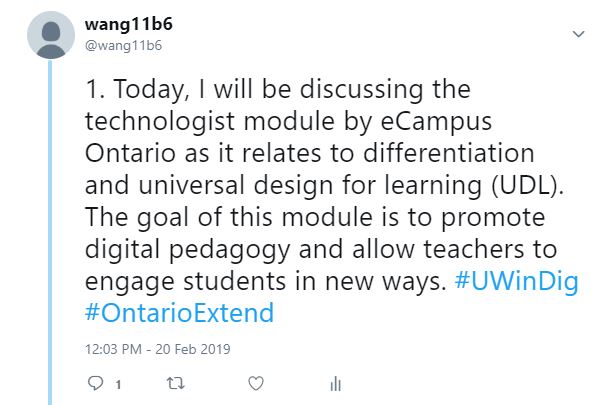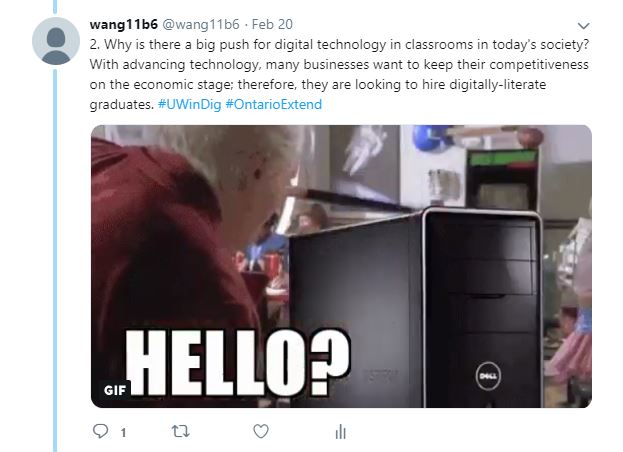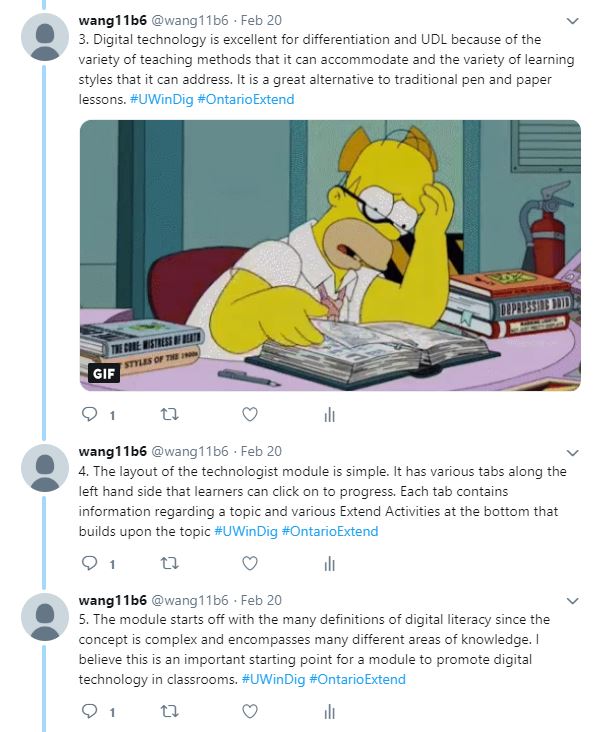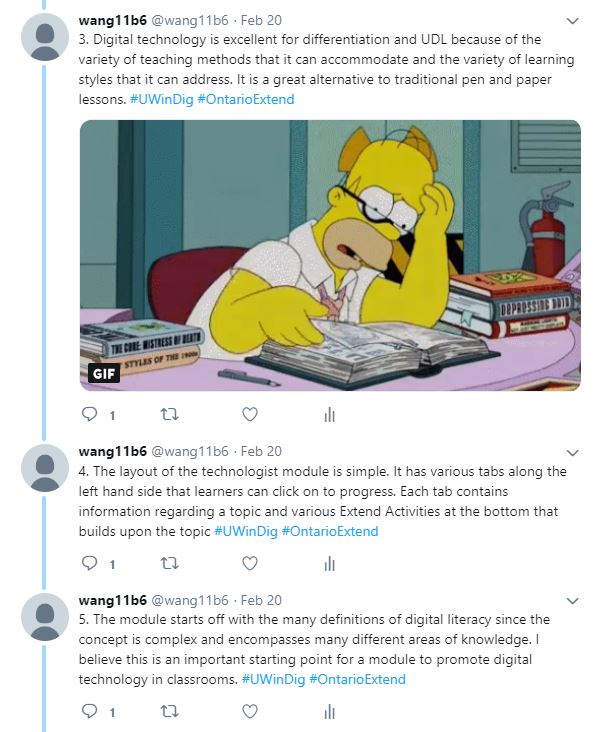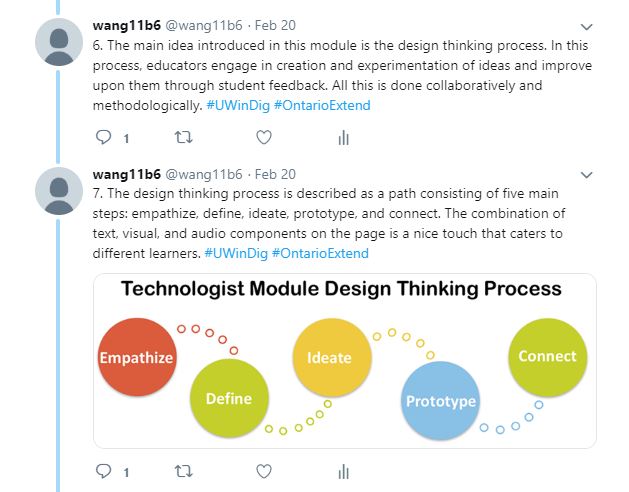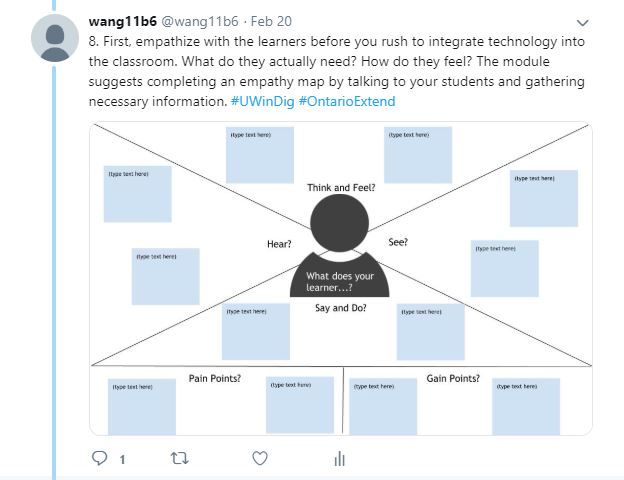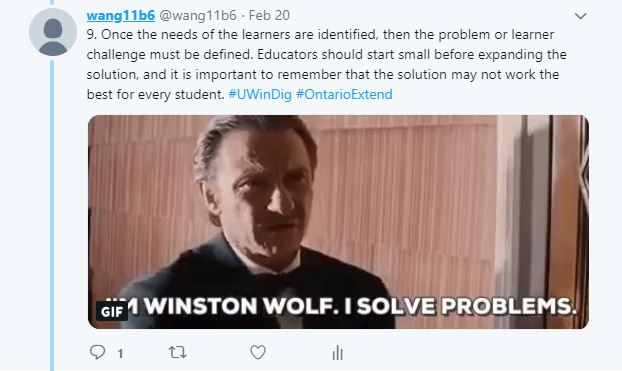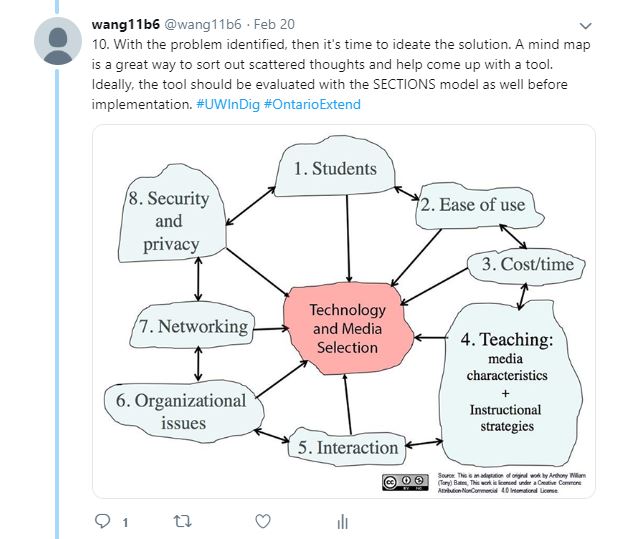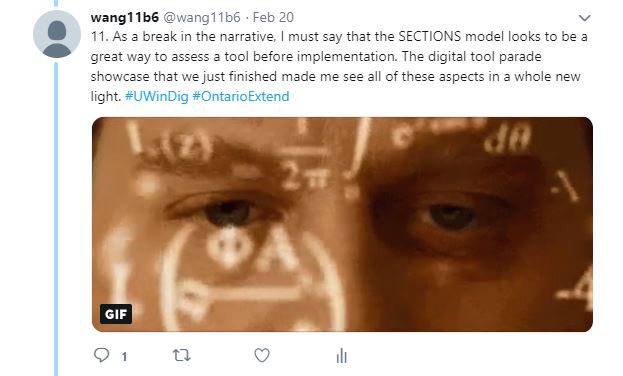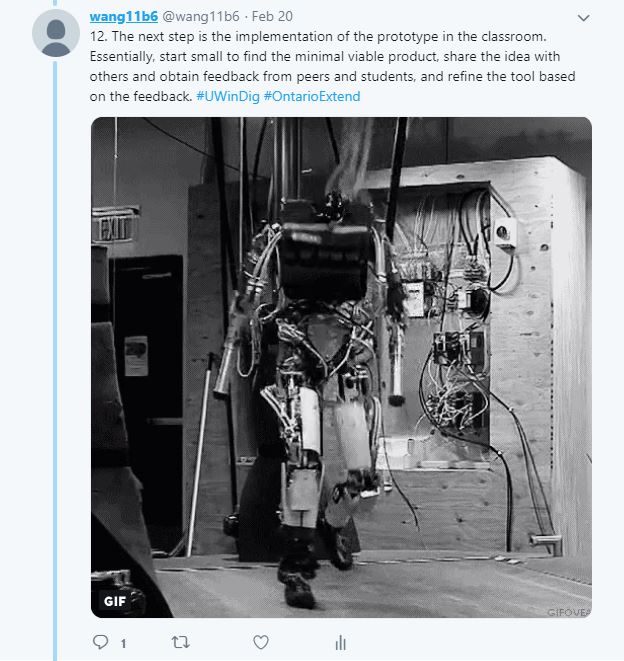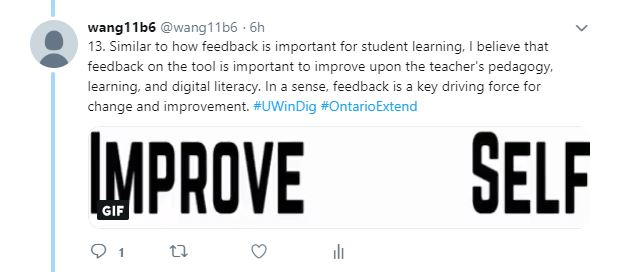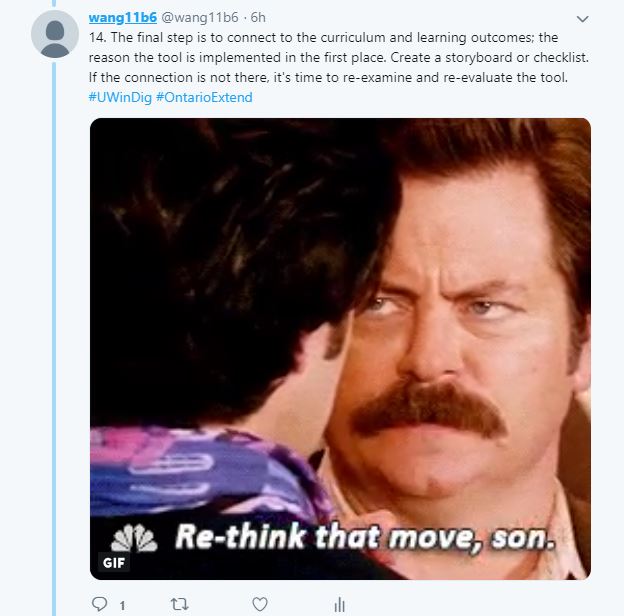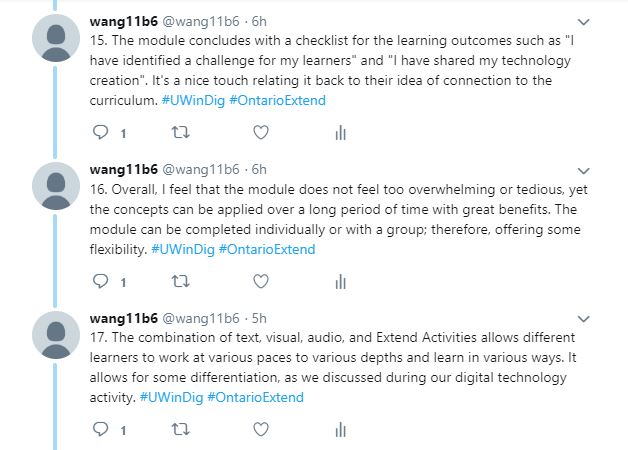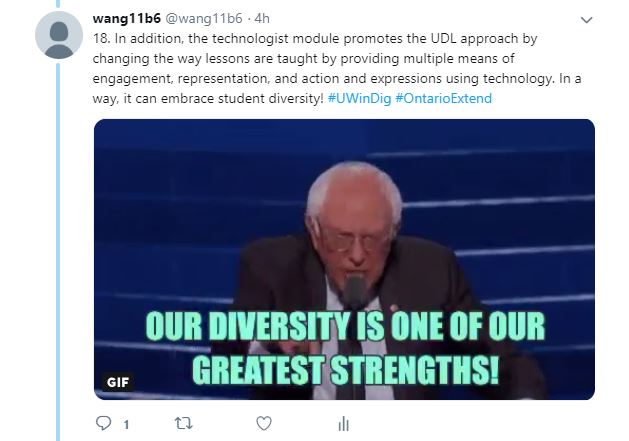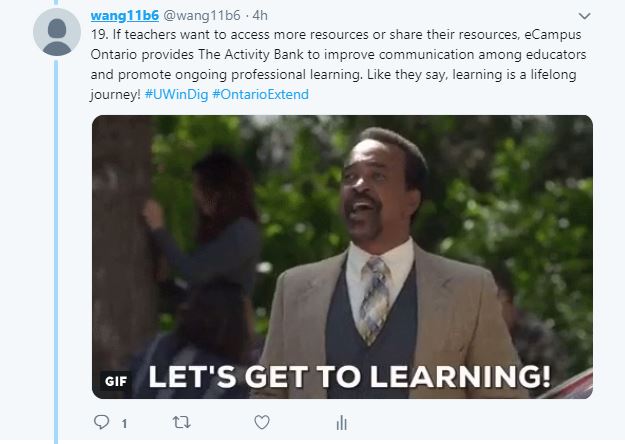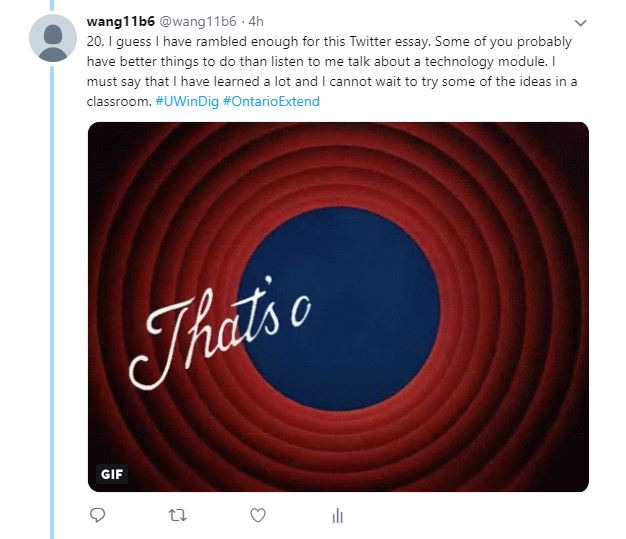For this multimedia reflection, I discuss the technologist module created by eCampus Ontario as part of their promotion of digital technology in classrooms. The artifact I chose was a Twitter essay and I analyzed the module as it relates to differentiation and the universal design for learning (UDL) framework. I reason I chose Twitter as my platform is because I feel that I can spread the word regarding this resource much more effectively than other platforms. Also, I want to keep my thoughts more short and concise (which was how the module was organized) for this reflection and I feel that the 280 character limit of Twitter greatly helps with this.
The technologist module talks about digital literacies and the path of design thinking, which is categorized into five main steps: empathize, define, ideate, prototype, and connect. This path follows a logical flow in the process of implementing a tool in the classroom. The teacher must first understand and identify the challenges that students face, brainstorm a tool and develop a prototype, and implement the tool and seek feedback for improvement. Most importantly, the tool must connect to the curriculum and learning outcomes. My overall impression of the module is positive. The content does not feel to be too overwhelming, and I am able to follow all their points clearly and proceed at my own pace. At critical points, there are accompanying visuals or videos to help clarify the concept. I like their definitions of digital literacy because I find that there are so many aspects to it, and the meaning can change from person to person. I also like their design thinking process because some teachers may rush to implement their tool into the classroom because its “cool” or “novel” that they do not stop to think whether it will be effective or not, essentially skipping over all the steps of design thinking (including feedback) and straight into the testing phase. In my opinion, a tool poorly implemented can hamper student learning much more than an effective lesson using traditional means. The empathize step really stood out to me because new tools should be implemented when students are challenged or struggling. Do they really need a new tool if everything is going well? As educators, I believe that knowing when to implement the tool is crucial. Another step that stood out to me is connect. Even though the module only spends two paragraphs talking about it, I find its message to be powerful. Does the tool enhance student learning to help them better achieve the learning outcomes? In the end, that’s what matters most in a classroom: technology is a tool to enhance student learning, not replace it.
The ultimate goal of the module to allow for differentiated instructions. For example, if students are not enthusiastic about writing an essay, perhaps assessing their analytical abilities through other means may provide better results. In a sense, it allows for students who may not be the best at writing to express themselves through other means. This promotes equity in classrooms because those students will not be unfairly evaluated due to their learning styles as opposed to their abilities. It also aligns with the UDL framework, which emphasizes engagement, representation, and action and expression in multiple means, because all students can now produce results based on their strengths as opposed to a few students. Ideally, the tool should accommodate expression using text, visual, audio, or other means. One example that I witnessed during my first practicum of a tool in action was Kahoot. As opposed to reviewing using traditional pen and paper or through oral means, teachers can quickly and effectively provide feedback on student learning and identify areas of improvements. In addition, students can also quickly produce Kahoot quizzes to engage the rest of the class. If certain students have issues with Kahoot, then they can also orally say the answer or write it down. As a final point, technology can also allow for many-to-many communication that is not possible before. This greatly improves the efficiency of information transfer. Of course, this also comes with the risk of cyber dangers, which I touched upon in my previous multimedia reflection. Therefore, teachers should be very familiar with the tool and digital safety (part of digital literacy) before its implementation.
Overall, Twitter was a user-friendly platform to use. It does produce a bit of an uncomfortable feeling knowing that my essay is posted on one of the most popular social media sites for all of public to see. Looking back on my experiences in this course, I must say that I am definitely more digitally literate and am more comfortable working with technology. For example, at the beginning of the course, I would never have dreamed of using Twitter as a platform for my multimedia reflections. In addition, I am also starting to think more critically about digital technology and find myself looking for the finer prints of a platform at times. One thing that has been consistent throughout is the strange feeling of not-yetness that I discussed in my first multimedia reflection. I am never really sure how things will turn out when I think about implementing a tool in the classroom. There is always this feeling of unfamiliarity at time, when I feel like I don’t understand technology at all or how to best use it to its full potential. I believe this is due to the ever changing state of our digital environment, where every educator must learn to quickly adapt or be left behind by their students and society. As a future educator, I must be prepared to take on this challenge to effectively integrate technology into lessons and provide high quality lessons with each class.
-Michael Wang
